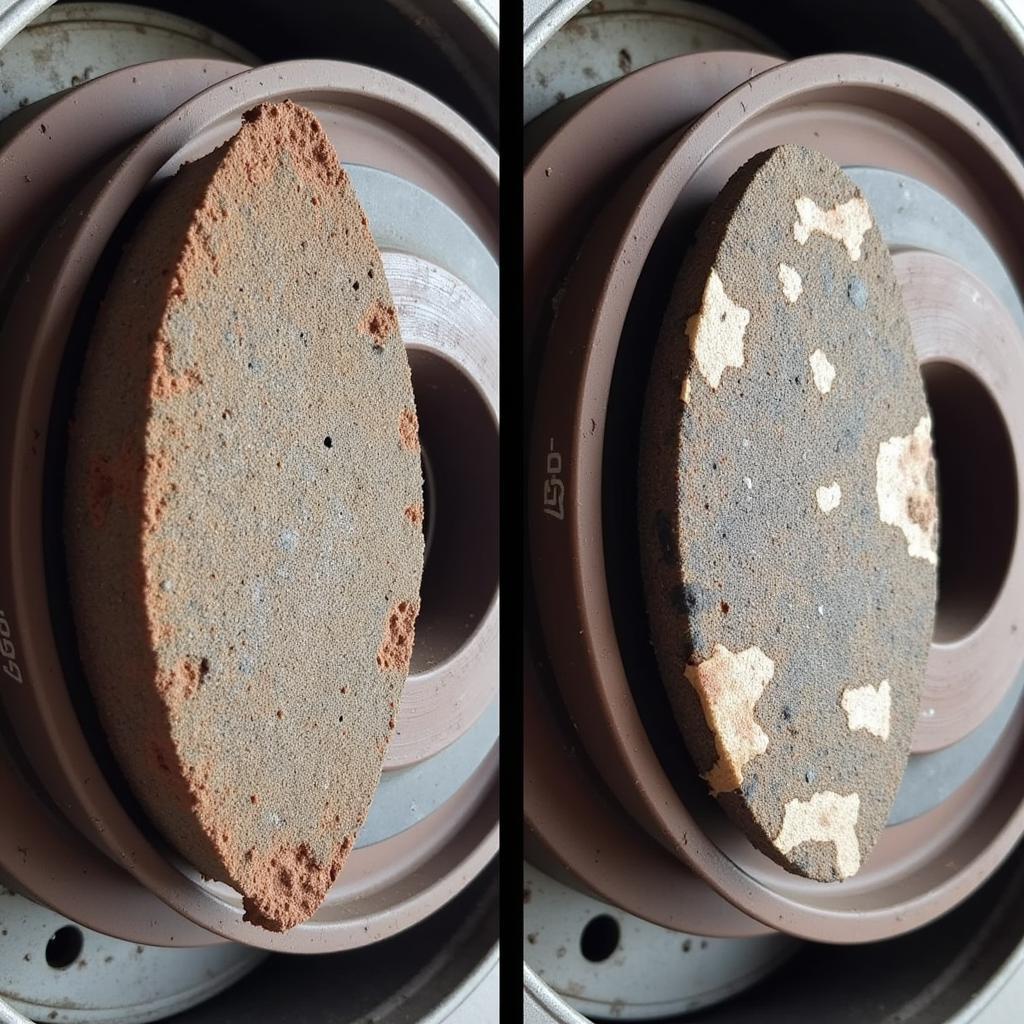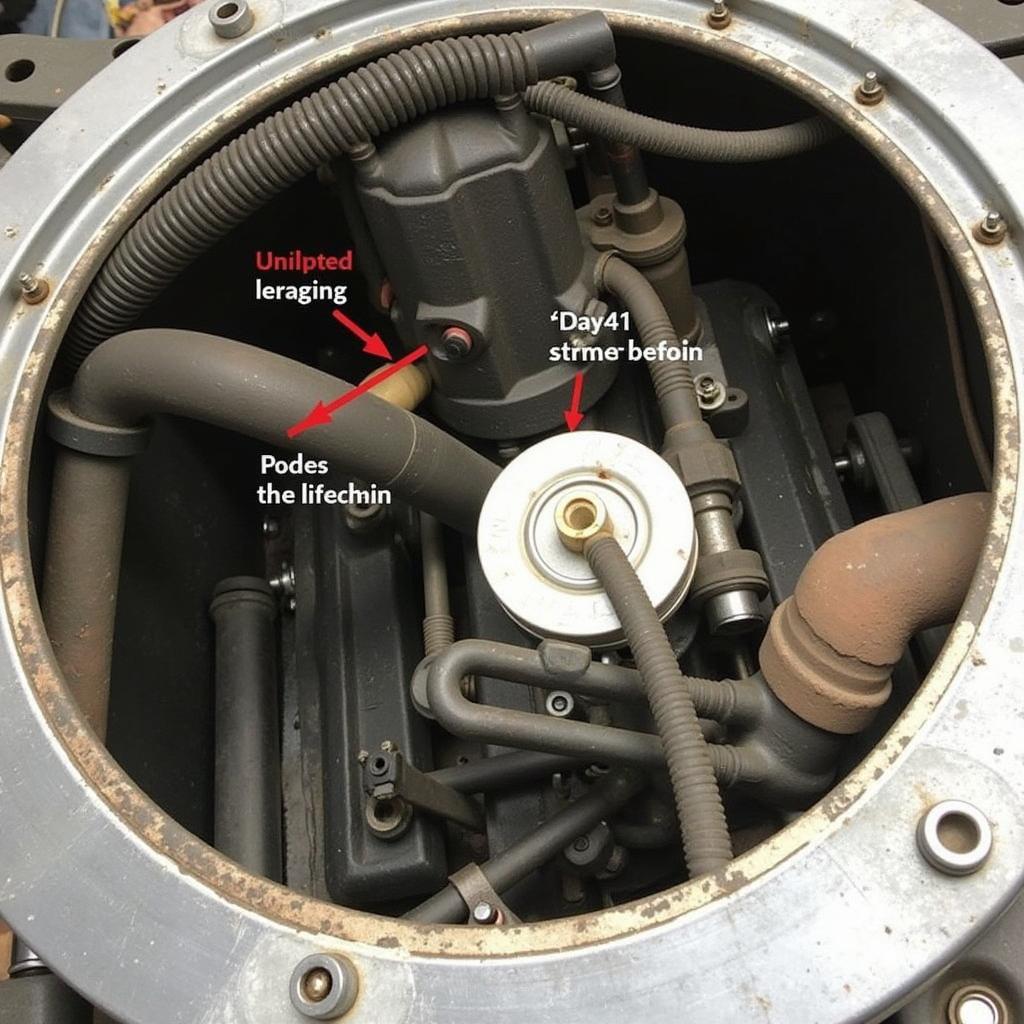A glowing brake warning light on your 1972 Ford is a clear sign that something needs attention. Ignoring it can lead to dangerous driving situations and costly repairs. This guide delves into the common causes behind a 1972 Ford brake warning light and provides troubleshooting steps to help you get back on the road safely.
Understanding Your 1972 Ford’s Brake System
Before we dive into the causes, it’s important to understand the basics of your classic Ford’s braking system. It’s a hydraulic system that relies on brake fluid pressure to activate the brakes at all four wheels. When you press the brake pedal, it activates a master cylinder that pressurizes the brake fluid, forcing the brake calipers or wheel cylinders to clamp down on the brake rotors or drums, respectively, slowing or stopping your vehicle.
Common Causes of a 1972 Ford Brake Warning Light
There are several reasons why your 1972 Ford’s brake warning light might be on. Here are some of the most common culprits:
1. Low Brake Fluid Level
The most common culprit is low brake fluid. As brake pads wear down over time, the brake fluid level in the master cylinder naturally drops.
How to Check:
- Locate the brake fluid reservoir. It’s usually a translucent plastic container mounted on the master cylinder, typically found on the driver’s side of the engine bay.
- Check the fluid level. Most reservoirs have “Min” and “Max” markings on the side. The fluid level should be between these lines.
2. Worn Brake Pads
Brake pads are designed to wear down over time. As they wear thin, the brake caliper pistons have to extend further to apply the same amount of pressure. This excessive piston travel can trigger the brake warning light.
How to Check:
Visually inspect your brake pads by looking through the spaces between the wheel spokes. You should see a metal backing plate and the brake pad material itself. If the brake pad material is less than ¼ inch thick, it’s time for a replacement.
 Worn Brake Pads on a 1972 Ford
Worn Brake Pads on a 1972 Ford
3. Brake Fluid Leak
A leak anywhere in the brake system will cause the fluid level to drop and trigger the warning light. Leaks can occur in the brake lines, hoses, calipers, wheel cylinders, or even the master cylinder itself.
How to Check:
Inspect all the brake components and lines for any signs of fluid leaks. Look for wet spots, drips, or puddles of brake fluid. Pay close attention to areas around the wheels and under the vehicle.
4. Faulty Brake Light Switch
The brake light switch is responsible for turning on your brake lights when you press the pedal. Sometimes, this switch can malfunction and cause the brake warning light to illuminate even if there’s nothing wrong with the braking system itself.
How to Check:
If you suspect a faulty brake light switch, it’s best to consult a qualified mechanic for proper diagnosis and replacement.
5. Issues with the Master Cylinder
The master cylinder is the heart of your braking system. If it’s malfunctioning, it can cause a variety of brake problems, including a lit warning light.
How to Check:
Look for signs of leaks around the master cylinder. Additionally, if you experience a spongy or soft brake pedal feel, it could indicate an internal master cylinder issue.
 1972 Ford Master Cylinder Leak
1972 Ford Master Cylinder Leak
What to Do When Your 1972 Ford Brake Warning Light Comes On
- Pull over safely: If you’re driving and the brake warning light comes on, safely pull over to the side of the road as soon as possible.
- Check the brake fluid level: If the level is low, add the correct type of brake fluid for your 1972 Ford.
- Inspect for leaks: If you see any signs of leaks, do not attempt to drive the vehicle. Call a qualified mechanic or tow truck.
- Seek professional help: If the brake fluid level is full and you don’t see any obvious leaks, it’s best to have your vehicle inspected by a qualified mechanic.
Expert Insights
“A brake warning light is a serious warning that shouldn’t be ignored,” says John Smith, a seasoned automotive engineer with over 20 years of experience working on classic Ford models. “Even if your brakes seem to be working fine, it’s crucial to identify and address the root cause of the warning light. Delaying repairs can lead to more extensive damage and compromise your safety on the road.”
Conclusion
Addressing a brake warning light on your 1972 Ford is crucial for safe driving. By understanding the common causes and following the troubleshooting steps outlined in this guide, you can get back on the road with confidence. Remember, when it comes to brakes, it’s always better to err on the side of caution and seek professional help if you’re unsure about anything.
